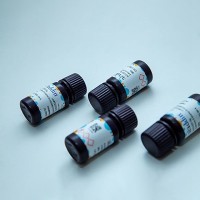Genome-Wide Profiling of DNA-Binding Proteins Using Barcode-Based Multiplex Solexa Sequencing
互联网
561
Chromatin immunoprecipitation (ChIP) is a commonly used technique to detect the in vivo binding of proteins to DNA. ChIP is now routinely paired to microarray analysis (ChIP-chip) or next-generation sequencing (ChIP-Seq) to profile the DNA occupancy of proteins of interest on a genome-wide level. Because ChIP-chip introduces several biases, most notably due to the use of a fixed number of probes, ChIP-Seq has quickly become the method of choice as, depending on the sequencing depth, it is more sensitive, quantitative, and provides a greater binding site location resolution. With the ever increasing number of reads that can be generated per sequencing run, it has now become possible to analyze several samples simultaneously while maintaining sufficient sequence coverage, thus significantly reducing the cost per ChIP-Seq experiment. In this chapter, we provide a step-by-step guide on how to perform multiplexed ChIP-Seq analyses. As a proof-of-concept, we focus on the genome-wide profiling of RNA Polymerase II as measuring its DNA occupancy at different stages of any biological process can provide insights into the gene regulatory mechanisms involved. However, the protocol can also be used to perform multiplexed ChIP-Seq analyses of other DNA-binding proteins such as chromatin modifiers and transcription factors.









